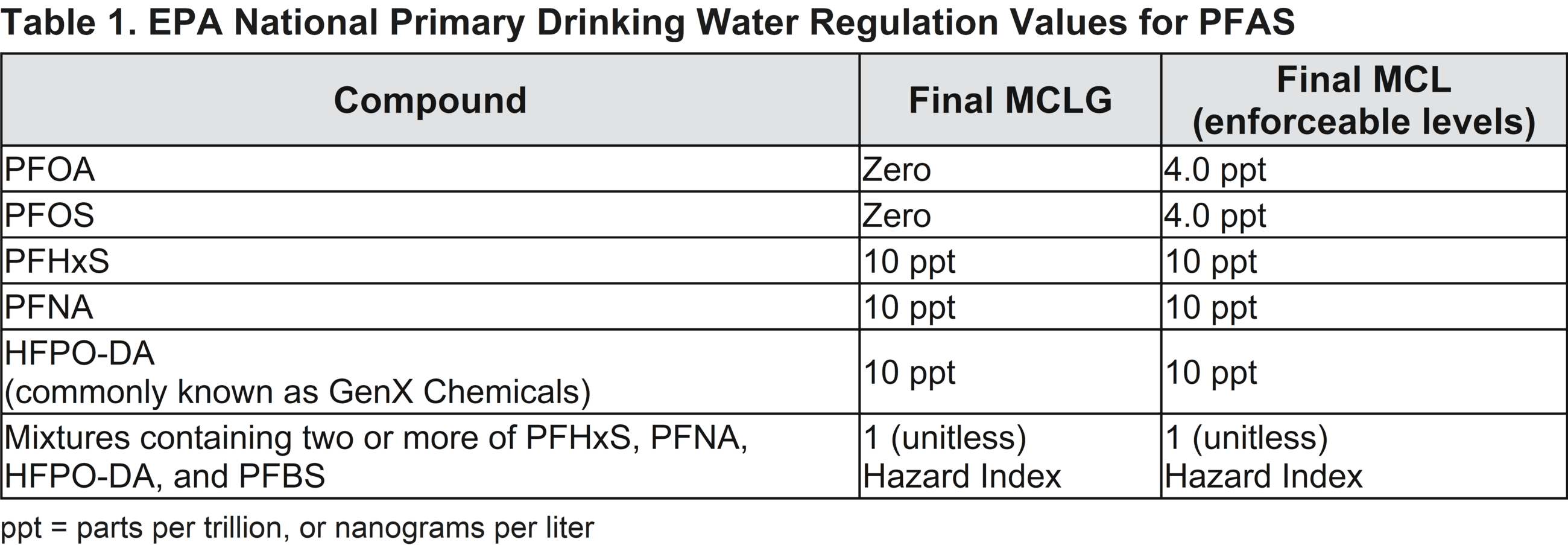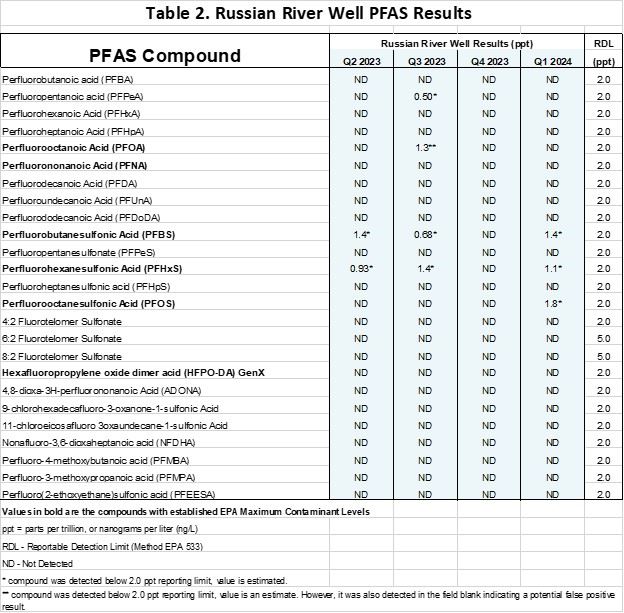What is PFAS?
Per- and poly-fluoroalkyl substances, also referred to as PFAS, are a group of man-made chemicals that are found in many commonly used products. PFAS are sometimes referred to as “forever chemicals” because they do not readily nor naturally break down into more inert compounds in the environment. Many commonly used products contain PFAS such as food packaging, non-stick cookware, stain and water-repellent products like carpets, clothing, and other fabrics, and in some personal care products such as shampoo, dental floss, and cosmetics.
Research suggests exposure to certain PFAS could result in harmful health outcomes, including cancer, increased cholesterol levels, and immune system effects, particularly to those in occupations that are known to be exposed more than the general U.S. population such as chemical manufacturing and firefighting.
Because PFAS are so prevalent and chemically stable in the environment, these types of chemicals can be found in water, air, and soil. Many PFAS are found in the blood of people and animals, including fish, all over the world and are present at low levels in a variety of food products. Because of this, many PFAS-containing products are being banned from use. For example, beginning in January 2022, California banned PFAS-containing firefighting foam.
What are the EPA limits for PFAS?
There are thousands of different variations of PFAS, but the most extensively produced and studied of these chemicals are Perfluorooctanoic Acid (PFOA) and Perfluorooctane Sulfonate (PFOS). On April 17, 2024, the EPA designated PFOA and PFOS as hazardous substances. Although PFOA and PFOS are no longer manufactured in the United States, they are still produced internationally and can be imported into the United States in consumer goods such as carpet, leather and apparel, textiles, paper and packaging, coatings, and rubber and plastics.
On April 10, 2024, EPA announced the final National Primary Drinking Water Regulation, establishing legally enforceable levels, called Maximum Contaminant Levels (MCLs) for six PFAS compounds (see Table 1). EPA also finalized health-based, non-enforceable Maximum Contaminant Level Goals (MCLGs) for these PFAS.

Are PFAS in Petaluma’s drinking water?
The City of Petaluma’s drinking water remains safe and protected from elevated contaminant levels, including PFAS. The majority of Petaluma’s water is imported from the Russian River system and supplied by Sonoma Water. Sonoma Water has been testing for PFAS annually for several years and began quarterly monitoring in April 2024. Sonoma Water has not found concentrations in the water delivered above the current state response and notification levels nor have they found concentrations above the maximum contaminant levels set by the EPA on April 10, 2024.
In 2023, the City of Petaluma completed the EPA’s Unregulated Monitoring Contaminant Rule (UCMR5) sampling events of the City’s water distribution system, and no PFAS were detected. Under the April 10, 2024, EPA PFAS Regulations, by 2027 the City of Petaluma may be required to perform and report initial monitoring results in its annual Consumer Confidence Report/Water Quality Report. Depending on those results, the City of Petaluma may be required to conduct testing various times a year. The City of Petaluma’s current and previous Water Quality Reports can be found here. .Sonoma Water’s recent sampling shows that while most levels of PFAS remain undetected in our source water, trace levels of some PFAS were detected below the 2.0 ng/L reporting limit (Table 2). Despite detections below current health advisory levels, the City of Petaluma staff takes this issue very seriously and will continue to monitor and notify residents if the amounts approach action levels.

RESOURCES
More information on PFAS, health risks, and how you can protect yourself can be found on the following sites:
Per- and Polyfluoroalkyl Substances (PFAS) | US EPA
PFAS Drinking Water | California State Water Resources Control Board
National PFAS Receivers Fact Sheet
National Communications Guidance: PFAS and Biosolids Management (casaweb.org)
WANT TO TEST YOUR WATER?
If you want to test your well water, a list of labs accredited for this method can be found here:

